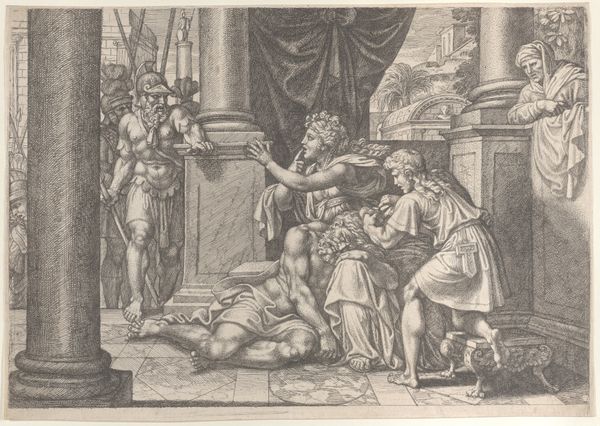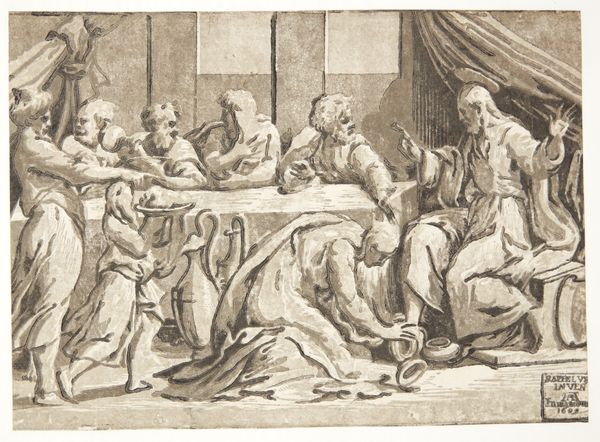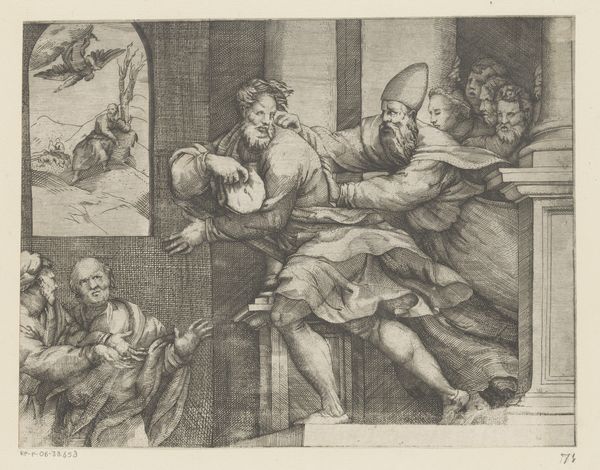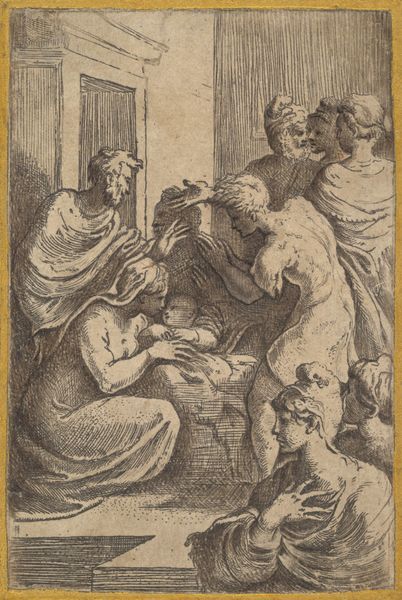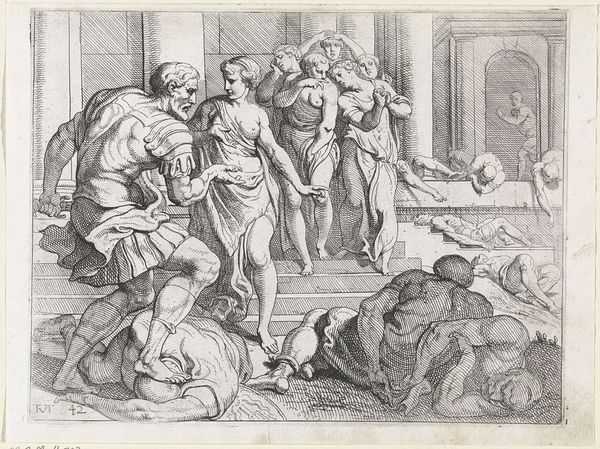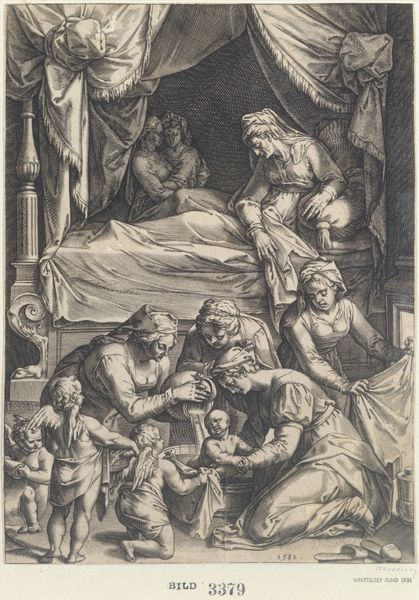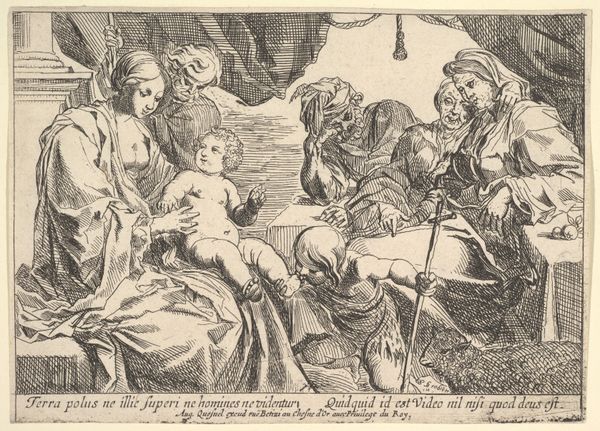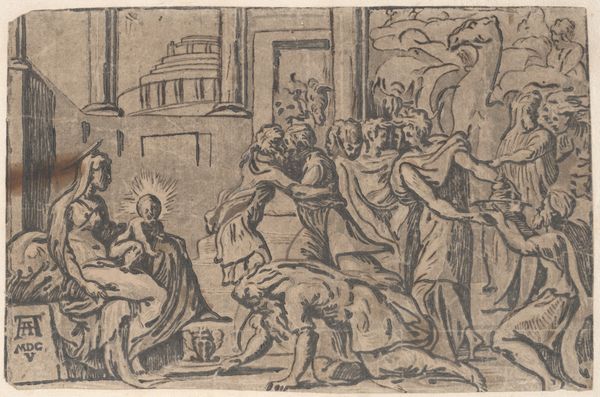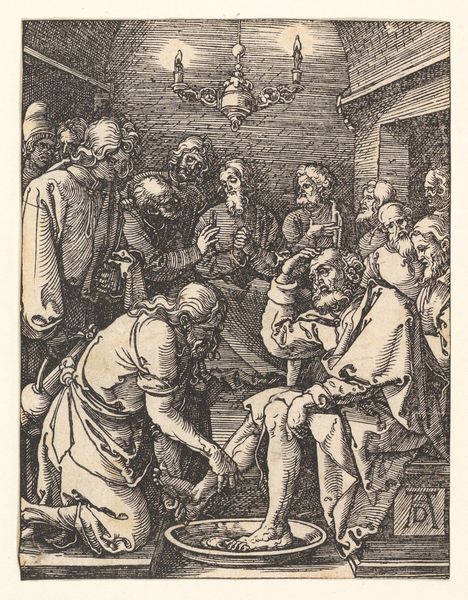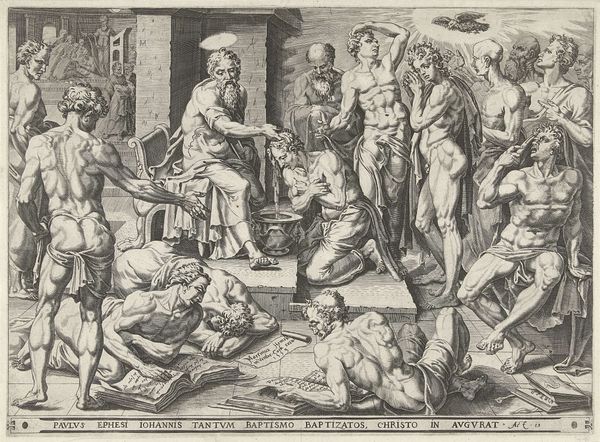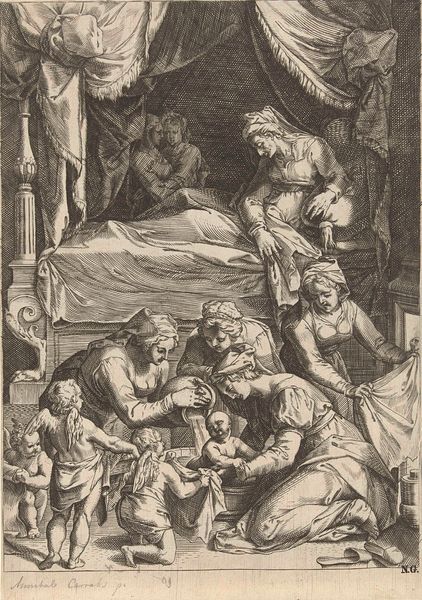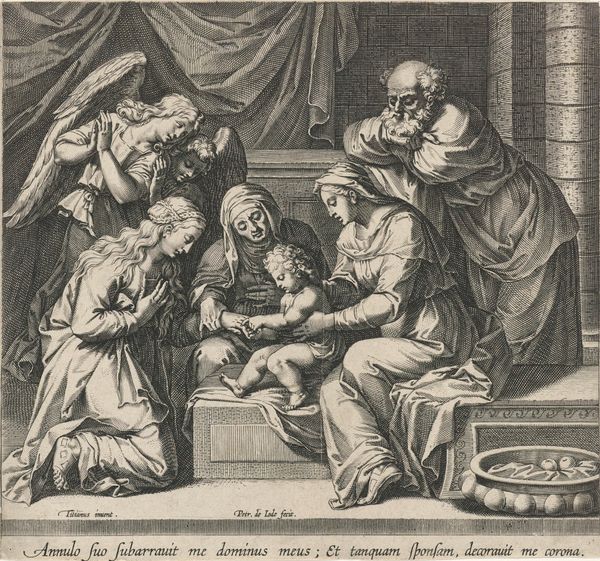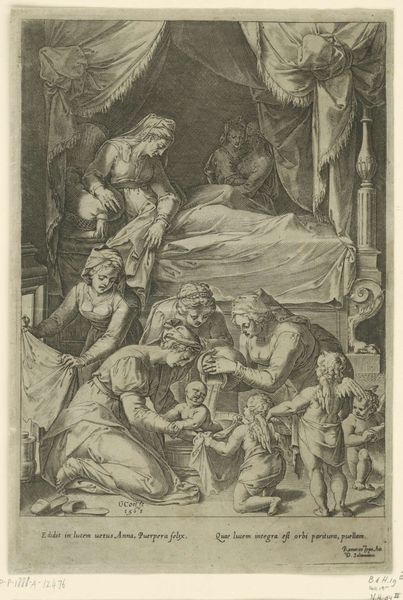
Lucretia instructing her daughters in needlework from Giovanni Ostaus's, La vera perfettione del disegno di varie sorte di recami (Venice, 1557) 1557
0:00
0:00
drawing, print, engraving
#
drawing
#
narrative-art
# print
#
pen illustration
#
pen sketch
#
figuration
#
line
#
history-painting
#
italian-renaissance
#
engraving
Dimensions: Sheet: 3 11/16 × 5 9/16 in. (9.3 × 14.2 cm)
Copyright: Public Domain
This engraving by Giuseppe Salviati, dating back to 1557, depicts Lucretia, a symbol of Roman virtue, instructing her daughters in needlework. Look at the prominence of the spindle and the threads. The act of spinning and weaving is an ancient symbol of feminine virtue, order, and domesticity. From the Greek myth of Penelope weaving a shroud for Odysseus’s father, only to unravel it each night, to images of the Virgin Mary knitting for the infant Christ, the thread represents patience, skill, and the management of the household. But it is also deeply connected to the fates and the weaving of destiny. Consider the gesture of Lucretia's daughter, her hand upon her chest, a silent acknowledgment of her mother's teachings and the weight of virtue she is expected to carry. This act is emotionally complex, engaging viewers on a subconscious level. The image’s power lies in how it taps into our collective memory, evoking an image of domestic duty and feminine virtue. This symbol is not static. It resurfaces, evolves, and takes on new meanings as it is passed down through history, forever evolving in meaning.
Comments
No comments
Be the first to comment and join the conversation on the ultimate creative platform.
